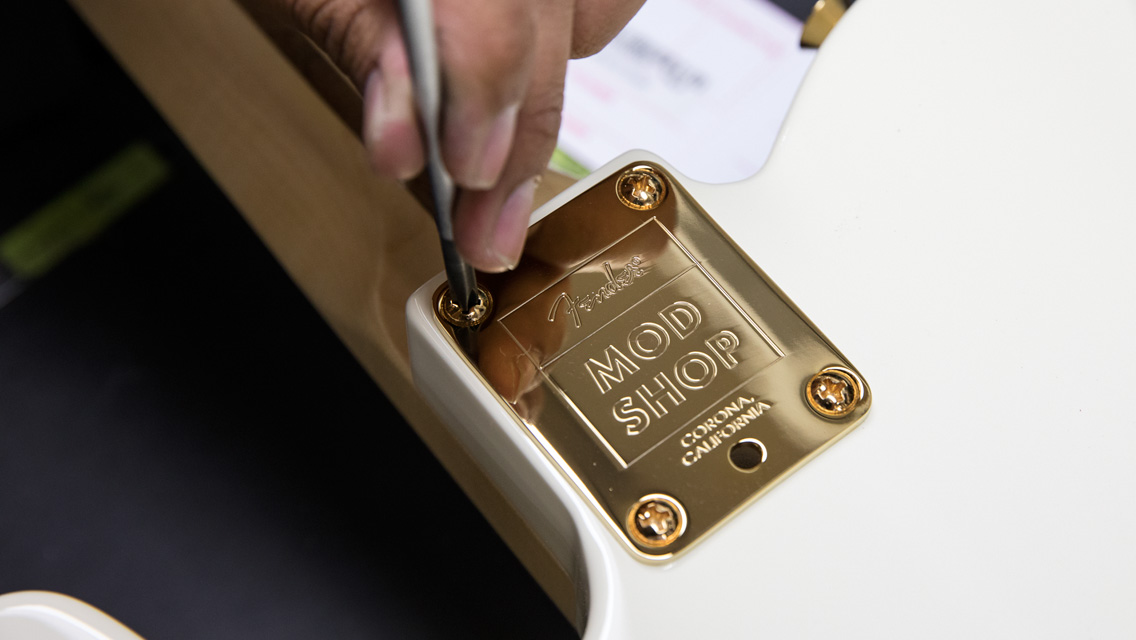
Sections
Rare is the guitarist these days whose rig doesn’t include effects.
If you’re only using a pedal or two, your signal path is still pretty straightforward and relatively uncluttered by modern standards. Plenty of guitarists, however, use many stompboxes, rack-mounted devices, etc., and if you’re one of those guitarists who has more special effects than Avatar arrayed at your feet, the question arises, “What order should all this stuff go in?”
There are no exact rules. You can put ’em all in whatever order you want, and let instinct and your ears be your guides. That’s perfectly OK. But there is a wealth of conventional wisdom about effects placement that goes something like this: gain-type effects come first, followed by time-based/modulation effects second, reverb third, other effects fourth and EQ pretty much wherever you want.
So if you use a lot of effects and you like a little order in your life, here’s the commonly followed breakdown, in a typical order of appearance in the effects chain:
Gain Effects
These increase your gain rather than change your sound, and include: preamps, compressors, distortion units, wah-wah pedals and EQ units (but EQ units are kind of a special case; we’ll get back to those in a minute). Distortion devices can add a lot of harmonic content to your signal, so other types of effects added after these tend to sound more intense. A wah-wah pedal is actually a form of active EQ circuit with a variable range capable of a variety of effects; as such it’s usually placed after gain-boosting effects such as preamps and distortion units, but Jimi Hendrix put his wah-wah pedal before his distortion unit, so there you have it (like we said, there are no exact rules).
Time-Based/Modulation Effects
These effects combine your original signal with a time-manipulated version of it. They encompass several of the most sonically colorful and spacious effects types, including choruses, flangers, pitch shifters and delay units. Unlike distortion-type effects, time-based effects units are often best placed in the “effects loop” portion of the signal chain (after an amp’s preamp section and before its power amp section) on amps that are so equipped, rather than up front in between instrument and amp.
Reverb
Reverb is distinguished here as a more naturally ambient sound than more discrete and artificial delay effects. It’s typically placed last in the signal/effects chain, although various effects are possible by placing it earlier (a good example is the “gated reverb” snare drum sound so prevalent in the 1980s).
Other Effects
Not all effects fit neatly into the above categories, but they can still be sensibly placed. Phase shifters resemble flangers in effect even though they’re more EQ-based than time-based; nonetheless, they’re right at home among the time-based effects (after gain and distortion effects but before reverb). Octave dividers are a form of pitch-shifting device, and can also be placed near time-based effects. Exciters are designed to make your entire sound more lively and sparkly, so it makes sense to place them at the end of the effects chain, right before reverb. Noise gate devices designed to cut off unwanted buzzing also belong at the end—again, usually before reverb, unless you want the trailing sound of the reverb to be cut off abruptly.
EQ
A special case. EQ (equalization) is actually a form of gain-type effect, boosting only a piece of the signal rather than the entire range. EQ units don’t change the overall sound of the signal; they’re mainly used to correct frequency deficiencies caused by other elements in the signal path and in the audio environment, and can hence be placed anywhere in the effects chain as circumstances warrant.
Remember that these are guidelines, not rules. Your creativity can extend not only to which effects you use, but also to the order in which you combine them.
Don’t miss out!
Be the first to know about new products, featured content, exclusive offers and giveaways.


